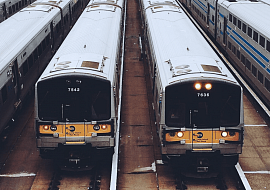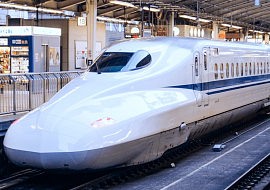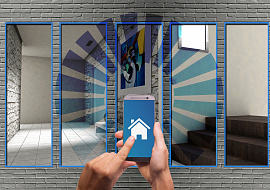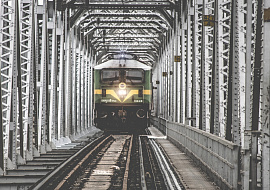Rail System Solutions: How Testing Support Can Be Useful for Your Safety-Critical Assets
Due to the high standardization of the railway industry, we often resort to testing safety-critical and mission-critical rail systems. V&V is an essential step to certify rail system solutions, ensuring they meet legal requirements, CENELEC or FRA standards, and the necessary Safety Integrity Level (SIL). As digitalization of the rail systems continue to advance, upgrades of the signaling, interlocking, and dispatching solutions are becoming more frequent. Testing activities can ensure everything runs smoothly.
For both management and service rail companies, testing support is not only a guarantee of the safety and reliability of the rail system solutions, but also a way to get rid of the headache associated with the need for a formal procedure of constant verification every time the system updates. When you collaborate with experienced firms in testing and rail signaling solutions, you not only have the change to identify issues before they become bottlenecks, but also to optimize testing procedures. It's a win-win situation! In today's ever-changing context, PSA reveals valuable guidance on how to reasonably approach rail testing.
When to Apply Testing Support for Rail System Solutions
So far, most rail delays and accidents have been primarily caused by human factors. Even before the digital revolution, innovations in rail system solutions were introduced to minimize the impact of human factors and enhance safety. Now, with the rise of digital technology, the rail industry is undergoing frequent upgrades to take advantage of advanced automation. However, it is crucial to thoroughly verify these upgrades to ensure their effectiveness and safety.
V&V processes are essential to ensure that both hardware and software systems operate properly in a specific configuration. V&V considers various railroad scenarios to eliminate dangerous failures and make sure the human factor cannot disrupt system operation. Continuous testing & bug fixing support is applied both when launching the product or solution, and updating the existing system with the following:
- Speeding up certification of the new product/system
- Validation of updates to the existing product/system
- Optimization for existing systems’ operation
Built on a modular principle, train control and supervision software requires testing of each component (module) both separately and within the whole system. There can be hundreds and thousands of modules in such software. Also, for the train control product to get certification, it has to prove operability and safety in all possible rail scenarios. Being acquainted with such systems, a testing team helps bring certification faster, complying with industry standards.
Implementation of any new hardware to the complex machine, such as interlocking controllers, may cause compatibility or performance issues among others. Thus, validation of any updates is obligatory in order to ensure that the implemented changes have not affected the functionality of other components of the system. Such updates are common for rail networks, which lead to permanent retesting of the same components. Having a team constantly working with the same modules on hand guarantees faster testing with time reduction in studying the system and creating documentation.
Performance evaluation and debugging play a crucial role in the rail industry. Given the long lifecycle of rail equipment, issues can arise due to compatibility problems between legacy components and newer rail system solutions. For instance, response time may increase, which is unacceptable for safety-critical systems. Thus, periodic assessments of the safety and performance of train control units are required, for instance within RAMS. PSA has extensive experience testing rail system solutions, allowing them to identify and prioritize the most critical vulnerabilities. They offer testing in both white and black box modes, providing a comprehensive evaluation of the product.
Need Help implementing rail system solutions?
Testing Support for Dispatching Systems
Modern dispatch systems produce hundreds of errors per year. Both custom dispatch tools for monitoring interlocking operations at a station and off-the-shelf products for centralized railway network supervision are susceptible to change. With the implementation of the systems, adjustment is needed to the specific train control system and network. It may cause UI failures, which is critical for correct rail supervision and management. Train tracking, public announcements, backups, authentication functionality, internal communication, scheduling, speed restrictions, and many more functions can be affected. With corresponding tests, such issues can be detected and successfully eliminated before they lead to unwanted consequences.
With the upgrades to the current rail system solutions or the introduction of new components, the functionality of the current dispatching system may not be enough. The most significant changes are usually associated with the integration of CBTC, PTC, ETCS, and similar modern train control systems. In these cases, the dispatching function might be substantially changed, since driverless applications are implied. Thus, when upgrading the signaling system, validation of its successful display in the control room is required.
Rail System Solutions: Interlocking Equipment Testing
As for interlocking, and on-board systems, we talk about three main types of testing – application, product, and board-level. In all cases, it is necessary to comply with ISO EN50128 – “Railway applications – Communication, signaling and processing systems.” This requires an individual approach to software and hardware development for rail.
When any upgrade, whether it is a simple change or more complex, like adding a new junction, the interlocking system gains new functionality. However, this also introduces the risk of potential incompatibilities. Changing the configuration of a control unit, for example, adding a more powerful processor, also necessitates comprehensive testing that covers the entire system. It also happens that upgrade-related issues are not detected immediately, for example, the need to replace a memory module. In such cases, constant support will serve you well, allowing you to track issues in advance.
Due to the extension of signaling and interlocking solutions, it is reasonable to try any updates in a simulation environment first. PSA works with off-the-shelf and custom testing tools and develops its own simulation solutions for interlocking applications. This approach allows you to save substantial resources on checking ineffective solutions.
Testing Approach to Onboard Systems
Validation of the ATP/ATO confirms that the system correctly performs all its functions, including after the updates and implementation of CBTC/PTC/ATC. All modules must be checked, for things such as overspeed protection, brake assurance, signal displaying, station stopping, door control, berthing, etc. Testing of such software applications, as well as interlocking ones, is performed through the Vector CAST tool but is also executable in custom environments. It confirms the execution of business logic, which means ultimate safety within the Movement Authority Limits.
By providing testing support upon request, you can efficiently compare the original and updated software versions, explore alternative testing methods for better code coverage, and promptly address any on-site issues that arise.
Testing of Rail System Solutions: Customization and Optimization
Another advantage of having testing support is the customization of testing solutions. This advantage moves testing away from a routine process with a set time and budget. For example, the existing testing fixtures may not be compatible with all train control units and with the current version of LabView, which forces them to approach the issue individually. In fact, the risk of incompatibility arises for testing itself too, which increases the likelihood of customization needs. Once PSA is familiar with your systems, it becomes easier for us to predict which systems will need to be individually tested by diving into their features.
The second point is custom testing tools. If you are not using an off-the-shelf testing tool, a third-party team has to be trained to work with your tool to execute tests successfully. PSA has been testing critical rail system solutions for over 10 years and is able to not only learn quickly but also offer updates to your custom tool in order to optimize your testing expenses.
Rail System Solutions: Conclusions about the Testing Activities
In view of the high customization of railway solutions and the long lifecycle of rail assets, various things can go wrong when testing, and it is difficult to prepare for this in advance. By hiring a highly qualified testing support team, you get:
- Deep expertise specifically in your products/solutions
- Instant response to emerging issues and preventative actions
- Customization of testing solutions
- Optimization of custom solutions leading to budget savings
We at PSA are not only theoreticians but also practitioners with 15+ years of experience in FAT and SAT for signaling solutions. We are ready to discuss options for one-time and ongoing cooperation in support and development of your rail system solutions. Let’s get to know each other better!















